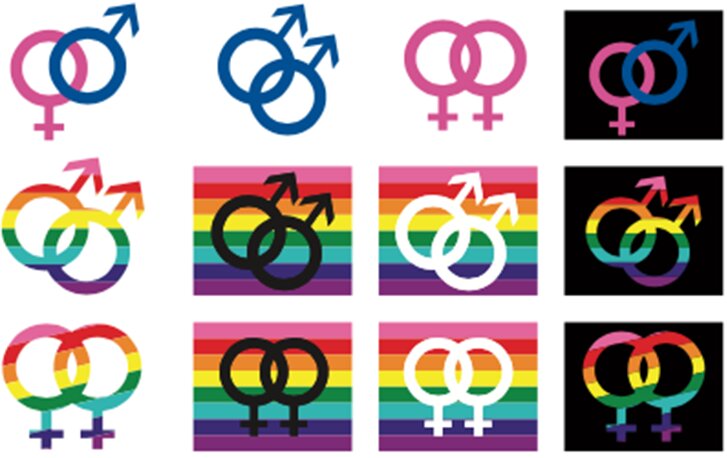
The “gender beat” concept developed less than a decade ago, but it has already evolved significantly since then.
“The modern concept of a gender beat started to emerge in trade publications, on Twitter and just in casual conversations among journalists probably around 2015, 2016. The New York Times’ appointment of a gender editor was a huge deal,” said Meg Heckman, a journalist, author and educator with Northeastern University. “I think it really empowered journalists that had long been covering these issues and interested in them to go to their bosses and get the approval to formalize gender beat coverage.”
Heckman published research in 2021 in “Constructing the ‘Gender Beat:’ U.S. Journalists Refocus the News in the Aftermath of #Metoo.” Many journalists Heckman interviewed in 2020 found the term “gender beat” too broad.
“[They] didn't love the term ‘gender beat’ because it felt like too much of a catchall to them. But at the same time, they liked the broadness and flexibility it gave them,” Heckman said.
Journalists covered topics ranging from women’s health, trans health, legal issues around reproductive health care access, women in politics, investigations into sexual misconduct and broad LGBTQ+ coverage.
“We also saw some of them reporting about childcare, education, domestic labor and caregiving. Those are issues that shouldn't be contained to a gender beat. But, because they have been historically associated with women and, as such, historically under-covered by mainstream news organizations, they were often becoming part of the gender beat,” she said.
She said many of the issues that have historically been gender issues impact all people.
“Gender issues are not necessarily synonymous with women's issues. Certainly, we want to ensure that all genders are accounted for and included in the stories we write and how we frame our coverage. We want to make sure that we're accounting for many different lived experiences, but a lot of the issues often attached to gender beats affect everybody,” she said. “Reproductive healthcare affects all genders. It affects men; it affects women; it affects non-binary folks. Childcare affects all parents and grandparents. It's a huge issue, a huge social problem. Education affects everybody. Sexual violence, unfortunately, affects all genders. So these are all issues every journalist should care about and understand how to deal with, how to cover with sensitivity and an understanding of gender dynamics in society.”
While many of the journalists Heckman interviewed thought the concept of a gender beat should not be necessary, Heckman said she believes it is a necessary stepping stone in the short term. Several journalists she spoke to no longer hold the same titles as gender beat reporters, and some publications focused on gender issues have folded.
“It could mean two things. It could mean that these gendered issues are just percolating into the broader beat structure in a newsroom, which is great and probably what needs to happen, or it could mean that news organizations are retreating and reverting to those masculine norms that have been in place for a really long time,” Heckman said. “And I suspect the reality is — it's a little of both.”
Heckman said that journalists who want to cover gender issues in their publications should approach their editors with examples of what is working elsewhere.
“If journalists are reading this who are interested in doing this type of work, there’s strength in numbers. If you can go to your boss or go to an assigning editor and point to great work that’s going on in this vein at other publications, that's really going to help your case,” she said.
Heckman said gender beat reporting at the state and local level is critical.
“When I started doing this research, I was completely surprised and thrilled to find out that there were gender beats at more local and regional publications and digital startups, too. I think that's really powerful and important,” she said.
Among successful gender coverage, Heckman pointed to Reckon in Alabama, a part of Advance Local. “An award-winning national news organization that covers the people powering change, the challenges shaping our time, and what it means for all of us,” its website says in its description.
Mississippi Today has won awards on reproductive healthcare coverage, along with projects in Ann Arbor, Michigan.
“These issues resonate in every community in different ways. You can make the case that these stories are a service to your community, a service to your audience, and other publications are doing them and doing them well,” Heckman said.
She said other journalists on the gender beat are a wealth of information for those entering the space.
“If you're in Maine, and you’re trying to cover an issue about rural reproductive health care, and somebody’s covering a similar issue really well in rural Alabama, reach out to that person and have a conversation,” she said. “Obviously, those communities will be very different in many ways, but there might be some similarities. Lean on all of the professional resources at your disposal,” she said.
Many journalists covering the gender beat are embracing intersectional feminism and trying to avoid past mistakes, Heckman said.
“Past feminist movements were often synonymous with white, middle-class women who were professionally ambitious. Journalists I spoke to had a real eye towards considering the experiences of many different types of women,” she said. “A gender beat should be empowering. It shouldn't be limiting.”
Heckman said masculine culture continues to be evident in journalism. There is still a greater tendency to give more coverage toward men’s and boys’ sports over women’s and girls' sports. Women in politics tend to be portrayed more critically than their male counterparts, often in gendered ways. Fewer women are quoted as expert sources.
“There are a lot of ways in which the news media either omits women entirely or marginalizes them in the narratives they construct, limits them to stereotypical roles or portrays them in a negative light, in a way that they would not with a male counterpart,” she said.
Cultural changes take time, Heckman said.
“Journalism, as a field, is in this interesting spot. Because when it comes to matters of social justice, it can be part of the problem and part of the solution at the same time,” she said. “There are so many routines and norms around how we do our jobs, in part because of deadline pressure, in part because of the need to do things quickly, the need to communicate across a vast news organization in a short amount of time. We have all these routines, habits and professional norms — many designed and enforced by white men. It takes time to change cultures, and I think cultural change is starting to happen. I think the existence of gender beats is part of that change. It can't be the only part of that change, though.”
 Alyssa Choiniere is an Editor & Publisher contributor and a freelance journalist based in southwestern Pennsylvania. She previously worked as a local newspaper reporter for 10 years. She can be reached at alyssa.choiniere@gmail.com.
Alyssa Choiniere is an Editor & Publisher contributor and a freelance journalist based in southwestern Pennsylvania. She previously worked as a local newspaper reporter for 10 years. She can be reached at alyssa.choiniere@gmail.com.
Comments
No comments on this item Please log in to comment by clicking here